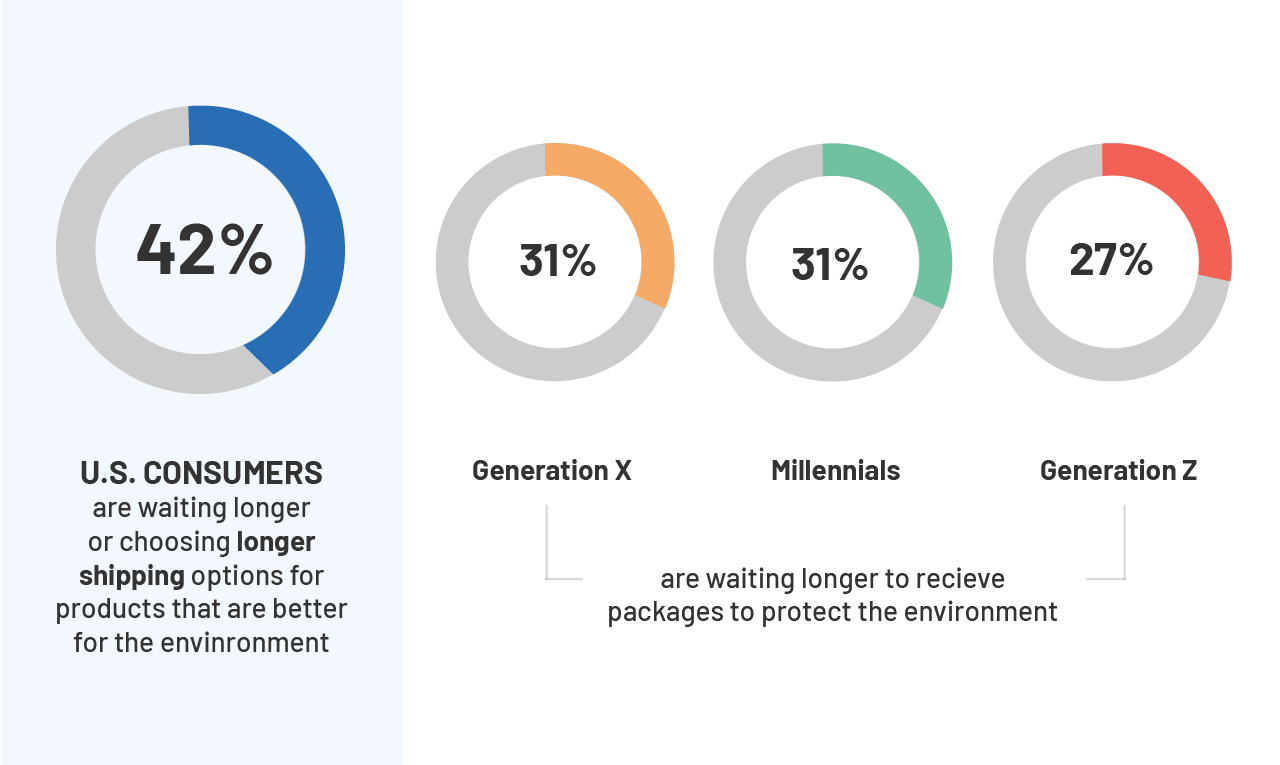Warehouses are a vital component of many supply chain organizations. However, maintaining them, especially in multiple locations, significantly impacts the environment. Going green has become a growing priority for many online businesses. Nearly every industry aims to project a cleaner image, from straightforward fulfillment services to local utility companies.
A sustainable warehouse uses many methods and strategies to reduce trash output and energy use, resulting in a facility with minimal environmental effects. The green logistics framework, which attempts to reduce the carbon footprint created by logistical activities and efficiently use supplies, includes these warehouses.
Take, for instance, the case of EcoHub, a pioneering sustainable warehouse facility located in the heart of an urban metropolis in the United States. By implementing cutting-edge green technologies, such as solar panels and rainwater harvesting systems, EcoHub has slashed its energy consumption by 40% while reducing its carbon footprint. This innovative approach enhances operational efficiency and sets a precedent for green practices in the logistics industry.
Logistics, storage, and handling companies have made environmental protection and finding ways to reduce pollution and its effects one of their top concerns.
Customers may be more loyal to businesses that practice operational sustainability and care for natural and human resources. Integrating green logistics into storage as a supply chain component can increase business productivity and boost financial performance.
Applying green trends to warehousing gives the world a faster return on investment (ROI) and longer-term gains while meeting customer demands.
What Makes A Sustainable Warehouse
Two elements are the key drivers of a sustainable warehouse:
The first factor is that a sustainable warehouse must reduce energy usage by avoiding unnecessary and excessive energy use. Alternatively, you can select energy options that will result in a reduction in total consumption. You can reallocate those resources to more critical activities.
The second aspect of sustainability in the warehouse is ensuring your processes don’t rely solely on conventional energy sources. Traditional or non-renewable energy sources are more susceptible to disruptions than renewable ones. This aspect will determine whether your warehouse can handle more significant activities in the future.
A sustainable warehouse uses energy-saving building materials and machinery. Lighting is often one of the primary energy consumers in a warehouse, so even minor adjustments can have a significant impact. Switching to LED lighting can cut heat generation and energy use. Additionally, LED bulbs outlast all other types of lighting, requiring fewer replacements and potentially saving money.
In some circumstances, the sustainability of a warehouse can be impacted by the materials used to construct or finish it. For example, non-toxic paints, sealants, wood products, adhesives, and carpeting contribute to a warehouse’s improved air quality. A building’s insulation can be improved to help save energy. By doing this, warehouse managers enhance the comfort of the workplace for employees.
Of course, not all eco-friendly features of a warehouse are found indoors. Typically, these buildings can have a rainwater harvesting and management system, solar panels, reflective/cool roofing, shade trees, and other components. A sustainable warehouse’s facade is easy to spot.
An essential aspect of a sustainable warehouse’s overall sustainability is its location. Placing a facility near an urban area, airport, road, rail line, or ocean port can cut delivery times and decrease transportation emissions. Infrastructure, like roads, utilities, and water lines, will probably already be in place, so you won’t need to build ones yourself.
Additionally, the redevelopment of brownfields benefits the community by cleaning up areas that may have previous environmental contamination.

Seven Key Steps to Achieving a Sustainable Warehouse
When considering sustainable warehousing, decision-makers must know how to quantify results and where to look for readily available, efficient products and techniques.
The primary sources of environmental pollution in warehouses involved with global supply chains are heating, cooling, and lighting. The carbon footprint of a warehouse increases generally with its size. Warehouse managers can assess the carbon footprint of their operations by considering emissions, natural resource consumption, quantity of waste, and recycling. Here’s how:
1. Energy Efficiency
Warehouse managers can install efficient HVAC systems, LED lighting systems, and lighting controlled by motion sensors. Evaporative coolers have become a practical substitute for refrigerant-based air conditioning, particularly in hot, dry environments. For these coolers to function, outside air must flow through chilly water. Several sustainable warehouses include renewable energy sources like solar panels and wind turbines to produce sustainable energy on-site.
2. Green Building Materials
Sustainable construction materials are used to develop or renovate new facilities. This includes employing eco-friendly insulation, paints with minimal volatile organic compounds, and locally produced or repurposed materials. Green walls and roofs are increasingly popular as they increase insulation, decrease stormwater runoff, and expand green space.
3. Water Conservation
Water-saving technologies such as low-flow plumbing fittings, rainwater collection systems, and adequate irrigation methods can be used in sustainable warehouses. These programs assist in lowering water consumption and easing the burden on nearby water supplies.
4. Efficient and Sustainable Transportation
A sustainable warehouse must prioritize efficient transportation to minimize emissions and their adverse environmental effects. Cross-docking is a perfect example of a logistics procedure that enhances inbound shipping and inventory control. Cross-docking facilities receive, sort, and transfer incoming shipments—typically less-than-truckload shipments—to fully loaded outbound trucks.
In other words, there is no storage in between when stock enters via one door and exits through the other. Cross-docking can benefit perishable commodities, items with a high turnover rate, and shipments that must arrive on schedule. Effective cross-docking activities can reduce the trucks needed to transport goods to a central warehouse and enhance the flow of goods during the distribution process.
5. Sustainable Packaging and Proper Waste Management
A major goal for supply chains is waste reduction, with packaging receiving attention. Effective waste management techniques include recycling paper, plastic, and other materials and composting organic waste programs.
Additionally, logistics companies can utilize fewer gaylord shipping boxes or reuse them more often. Though these bulk containers are excellent for commercial use, hand unloading is difficult. To retrieve objects from the bottom of the bins, workers must cut crescent-shaped holes into the containers, causing irreparable damage. Damaged boxes lead to more waste.
6. Utilize Artificial Intelligence and Automation
Robotics and artificial intelligence (AI) are used in automation hardware and software to enhance warehouse processes and operations. Sorting technologies facilitate the movement of goods while automating laborious and hazardous physical sorting operations. Robotic picking can also cause less damage to storage bins and boxes. Automated storage and retrieval systems enable more accurate order picking, more effective use of floor space, and less labor-intensive operations.
AI powers automation and robotics. Thanks to machine learning algorithms, robots can learn new processes and improve their work through experience. They can also adapt to changing situations. Robots can interpret visual and sensory input using AI-driven perception systems, enabling object recognition, navigation, and pick-and-place operations.
7. Monitoring & Analysis
More warehouses are adopting data and analysis technologies to track and optimize energy, water, and trash generation. This becomes much easier when you have more automated processes. Additionally, data analysis aids in predicting equipment failure and maintenance requirements. Firms can proactively schedule maintenance operations and reduce downtime by analyzing patterns, spotting anomalies, and avoiding possible problems.
It is crucial to make the most of the storage space to increase the output of the numerous operations in the warehouse. The warehouse layout must first be optimized, and the best storage system must be installed.
Warehouse simulation software is one of the best, as it generates a virtual simulation of a logistics facility. It enables businesses to execute various tests to determine the warehouse’s maximum performance in scenarios like increased order quantities.
A sustainable warehouse offers many advantages, including increased cost and operational effectiveness. Furthermore, it’s important to emphasize the huge impact it can have on the environment. It would be advantageous to achieve sustainability not just for the environment but also for the future of your warehouse. Online merchants must be more alert to the ever-growing issues that industries confront about climate change and global warming.
Aratum helps you reduce storage and shipping costs through an optimal distribution network of global warehousing partners. Combined with cutting-edge supply chain tech, you can easily automate and monitor many of your warehouse processes. Book a demo now.
The featured photo of this article was sourced from wirestock on freepik.




